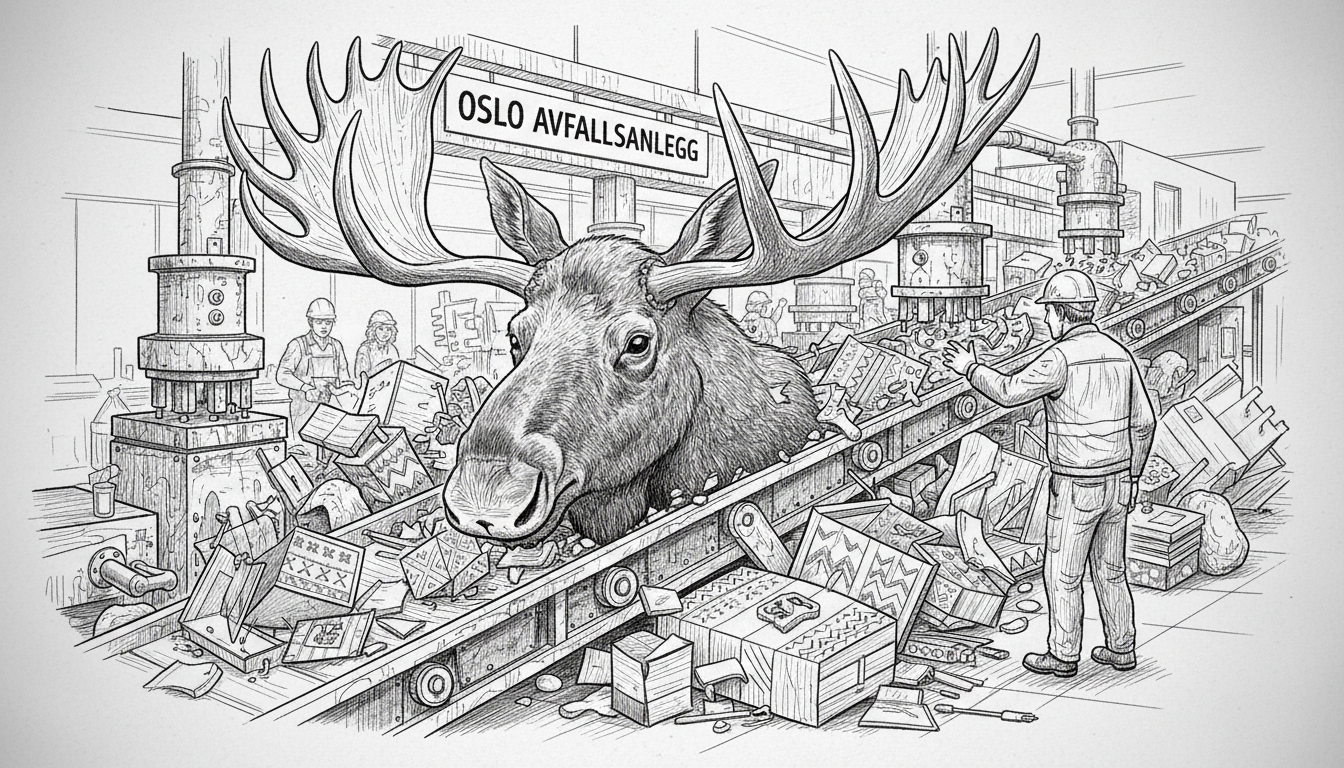Oslo's waste management department received an unpleasant surprise overnight. Workers discovered a moose head and parts of a moose carcass in the sorting system at the Haraldrud facility. Someone had improperly disposed of the large game animal in regular household waste.
The facility's team leader explained this creates serious operational problems. Large game animals can jam machinery and force costly shutdowns. Workers must then manually remove the remains, which presents hygiene challenges. Rotting carcasses often contain larvae and worms, creating unsanitary conditions.
This marks neither the first nor likely the last such incident. The facility receives five to six moose carcasses annually during hunting season. Roe deer appear throughout the year as well. All such discoveries disrupt normal operations and create unnecessary expenses for the municipality.
The timing coincides with another seasonal waste issue. As residents unpack Christmas decorations, many discard non-functioning Christmas lights in regular trash. These lights create different but equally problematic tangles in sorting equipment. The cords wrap around machinery with tremendous force, requiring difficult manual removal.
Proper disposal methods exist for both holiday lights and game animals. Electrical items belong at designated electronic waste recycling stations. For large game, standard practice involves hunters leaving carcasses in the forest after field dressing. Small amounts of slaughter waste can be buried with landowner permission, provided no environmental damage occurs.
Larger scale disposal requires different solutions. Multiple animal remains or established disposal sites need approved landfill permits. Slaughterhouse waste from commercial operations must go to authorized reception facilities. The same regulations apply to animals found dead in the wild.
This incident highlights broader waste management challenges in Norway. As urban areas expand and hunting continues in nearby forests, proper disposal education remains crucial. The waste system operates efficiently when residents follow guidelines, but faces unnecessary strain when unusual items enter the waste stream.
The financial implications extend beyond immediate cleanup costs. Damaged conveyor belts and sorting equipment require taxpayer funds for repairs. More importantly, these incidents divert workers from their primary responsibilities, reducing overall facility efficiency.
Norway's approach to waste management combines practical solutions with environmental consciousness. The country maintains high recycling rates while managing unique challenges like seasonal hunting remains. Public cooperation remains essential for maintaining this balance, particularly as urban and natural environments increasingly intersect.

